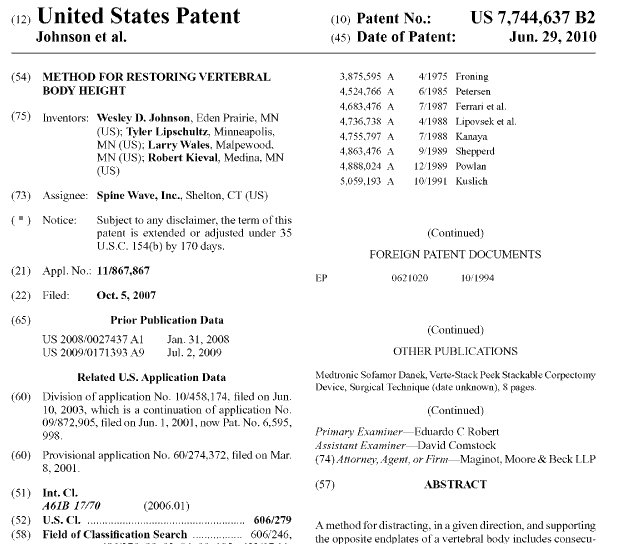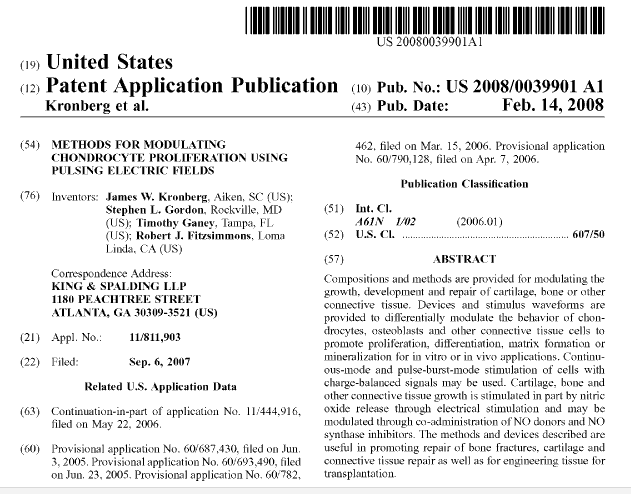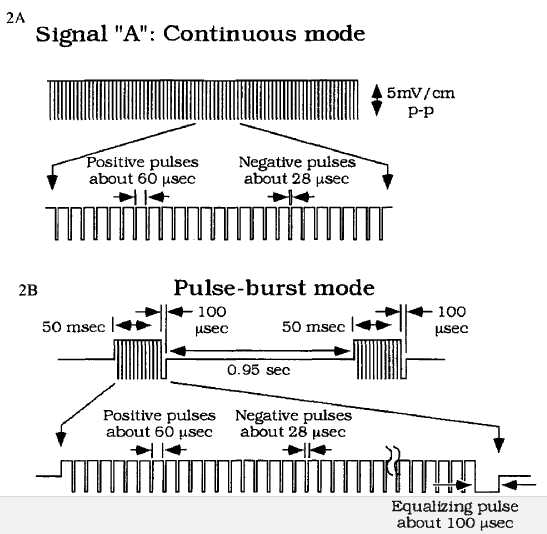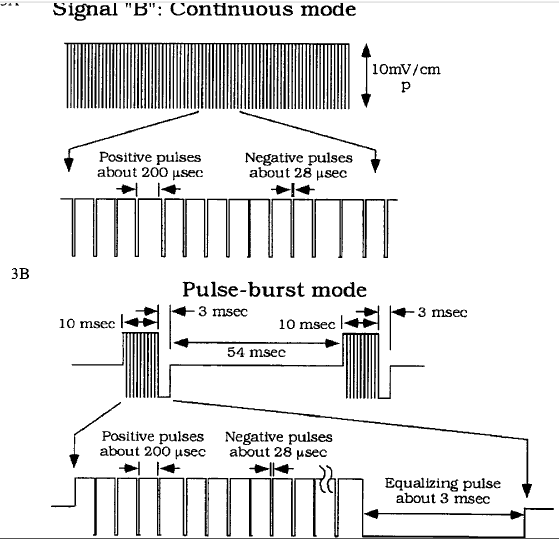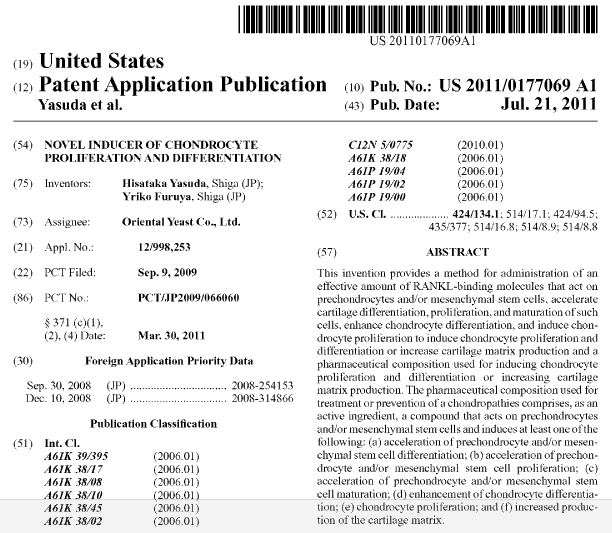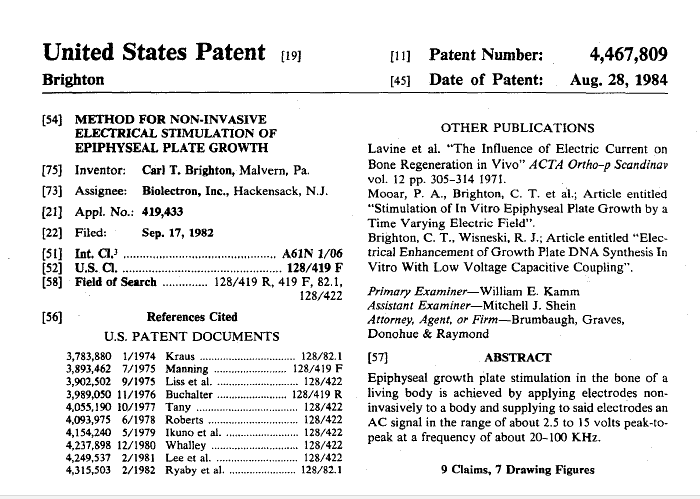Me: This is the first type of invention I have ever found which shows that people have already found out how to possibly increase stature by using gene therapy. This is real. It seems the Guanyl Cyclase B activator somehow increase the cartilage in the subject’s body. Most of the technical material on genetics is over my head at this time. There is no way at this time that I can explain it as well as I hope to. This method appears to show that the technology is already available to have genetically engineering babies who are modified to be taller and bigger than the original genetic material.
The patent was found from the link HERE.
This invention provides a composition for increasing a body height of a patient with short stature or an individual other than patients with short stature. More specifically, the invention provides: a composition for increasing the body height of an individual comprising a guanyl cyclase B (GC-B) activator as an active ingredient, the composition being to be administered to an individual free from FGFR3 abnormality; a method for increasing the body height of an individual free from FGFR3 abnormality which comprises activating GC-B; a method for screening an agent for increasing the body height of an individual which comprises selecting an agent for increasing the body height using GC-B activity as an indication; and a method for extending a cartilage bone free from FGFR3 abnormality which comprises activating GC-B in an individual.
현행 미국 분류: 514/1.1; 435/29; 530/300; 530/324; 530/326
Guanyl cyclase (GC) is a membrane protein belonging to the enzyme family that catalyzes the synthesis of the second messenger cGMP from GTP, and its examples include GC-A, GC-B, . . . , and GC-F. GC-B is found mainly in vascular endothelial cells, and thought to be involved in relaxation of the smooth muscle.
An object of the present invention is to provide a composition for increasing a body height of a patient with short stature or an individual other than patients with short stature, who is free from FGFR3 abnormality, for therapeutic, cosmetic, or other purposes.
It is another object of the present invention to provide a method for increasing a body height in a patient with short stature or an individual other than patients with short stature by the activation of GC-B, wherein said patient and individual are both free from FGFR3 abnormality.
A further object of the present invention is to provide a method for screening for an agent for increasing a body height using the activity of GC-B as an indication.
A still further object of the present invention is to provide a method for extending a cartilage bone free from FGFR3 abnormality by the activation of GC-B.
| C-type Natiuretic Peptide and Achondroplasia | |||
| Volume 20, Issue 2, 2004 © 2004 Prime Health Consultants, Inc. |
|||
| C-type natiuretic peptide (CNP) is a member of a family of 3 related peptides—atrial natiuretic peptide (ANP), brain natiuretic peptide (BNP), and CNP. They act by inducing accumulation of intracellular cGMP through 2 subtypes of guanylyl cyclase: guanylyl cyclase A for ANP and BN,P and guanylyl cyclase B for CNP. Although the natiuretic peptides are known mainly for regulating the cardiovascular system, there is growing evidence that CNP is an important positive regulator of endochondral bone growth. For example, genetically engineered mice have short bones when null for CNP and long bones when CNP is overexpressed. In fact, growth plates in these mice are shortened and widened in a manner similar to that detected in mice with loss- and gain-of-function mutations for FGFR3, respectively. These observations led the group headed by Nakao to propose a functional relationship between CNP and FGF signaling in the growth plate, which they have now demonstrated by mouse genetics.The group first generated transgenic mice in which CNP was overexpressed in the growth plate; expression of the gene encoding CNP, designated Nppc, was driven by the type II collagen cartilage-specific promoter (Col2). The Col2-Nppctransgenic mice displayed excessive skeletal growth that was mainly postnatal. Compared to non-transgenic littermates, the Col2-Nppc transgenic mice had longer body length, longer limb bones, a longer cranial base (measured as naso-occipital distance), and wider growth plates by histology.Next, the Col2-Nppc transgenic mice were mated to another transgenic mouse strain in which the achondroplasia-activating mutation of FGFR3 was expressed in cartilage also under the control of the type II collagen promoter (Col2-FGFR3 ach). The latter mouse strain exhibits a dwarf phenotypic with characteristics of human achondroplasia and is considered an animal model for this condition. Offspring of this mating that carried both the Col2-Nppc and Col2-FGFR3 ach transgenes had near normal body lengths when measured over 10 weeks. At 3 months, measurements of cranial base length, femurs, and humeri were statistically the same as non-transgenic mice, indicating that over-expression of CNP in the growth plate had rescued the dwarfism caused by the achondroplasia transgene. There was also restoration of the shortened growth plate of the Col2-FGFR3 ach mice toward normal in the mice harboring both transgenes. Of note, the over-expression of CNP did not appear to rescue the reduced proliferation of growth plate chondrocytes detected in the Col2-FGFR3 ach mice.To confirm the direct effect of CNP on bone growth, the authors treated cultured tibias from Col2-FGFR3 ach mice with different doses of CNP. Bone length showed a dose response to the CNP. The dose that restored bone length to normal also restored synthesis of 2 markers of cartilage matrix biosynthesis—glycosaminoglycan and collagen—which were reduced in the Col2-FGFR3 achmice to near normal.
The authors next examined the effect of CNP on FGFR3 signaling pathways in the tibial explants. No differences were observed in FGF–induced STAT1 signaling, which has been implicated in the control of chondrocyte proliferation. However, CNP reduced signaling through the MAP kinase-ERK pathway. The model that Yasoda et al 1 constructed suggests that FGFR3 signals through STAT1 to down regulate chondrocyte proliferation and differentiation and through the MAP kinase-ERK pathway to negatively control matrix synthesis in the growth plate. They propose that CNP blocks the MAP kinase inhibitory signals of FGFR3 to increase matrix synthesis and thereby counters the restraining consequences of FGFR3 on bone growth. They speculate that these observations could form a basis for a new therapeutic approach to treating achondroplasia. Editor’s Comment : This is a very interesting paper that brings to the fore a growth plate regulatory circuit that has not been widely appreciated in the bone growth field. It also suggests that contrary to the popular view that activating FGFR3 mutations acts primarily through inhibition of chondrocyte proliferation and differentiation, they may also act by inhibiting the synthesis of the extracellular matrix that also contributes to bone growth. The idea that CNP could be used to stimulate growth in achondroplasia is intriguing. Obviously, this work needs to be confirmed and much more investigation done, but in theory, blocking a downstream pathway that propagates growth inhibitory FGFR3 signals has promise. Of caution is that high levels of CNP likely generated in cartilage of the transgenic mice, which presumably would be needed to counter the effects of mutant FGFR3 in patients, may be very difficult to achieve in a therapeutic setting, especially without having adverse effects on other tissues that respond to CNP such as kidney, adrenal gland, and cardiovascular system or on other regulatory circuits that utilize MAP kinase-ERK pathways. Nevertheless, the unfolding of this story deserves considerable attention. William A. Horton, MD |


